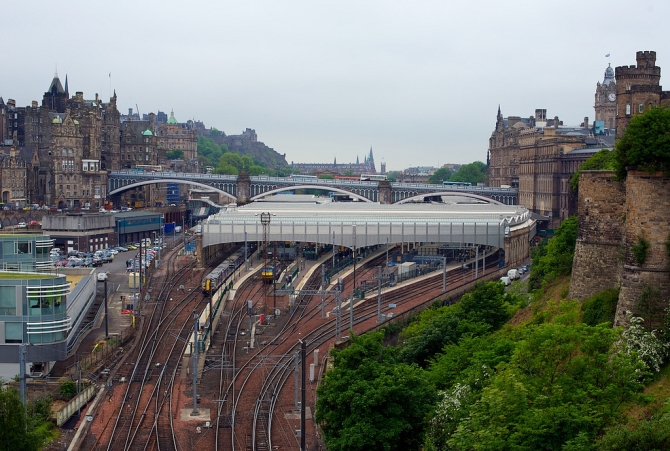Scottish rail bosses have failed to spot a prime money making opportunity by not transforming Waverley station into a shopping venue, a retail expert has claimed.

The suggestion comes from Leigh Sparks, a professor of retail studies at Stirling University, who says that by mimicking the success of London’s King’s Cross and St Pancras stations — both of which have extensive retail space— the Edinburgh station could also maximise its potential.
“When you think of the footfall that passes through Waverley, you have got a very interesting market and the retail offer should match that,” explained Sparks. Waverley is already one of the busiest stations in Scotland with around 25-million passengers passing through its doors each year.
“Taking London as a model should be their ambition in terms of this gateway to Edinburgh,” he said. “Rail bosses also need to look at more international examples like in Japan where railway stations are planned and managed as commercial hubs. Any development like that would be a useful showcase for Edinburgh.”
His comments come just weeks after a controversial taxi ban came into force freeing up prime retail plots in the heart of the building. Waverley currently houses a popular Marks & Spencer mini-supermarket, a fast food restaurant, bar and several eateries, but many experts believe the new private vehicle ban presents a chance to expand the station’s retail mix to include boutique stores and franchises in what is seen as an “untapped gold mine” for Network Rail.
Andy Neal is chief executive of Essential Edinburgh which represents hundreds of city centre outlets. He is adamant that Waverley station had “fallen badly behind” its UK inter-city rivals and other major European stations.
“At the moment it is well below standard and needs to be upgraded,” Neal claimed. “The station is the first thing people see when they get off the train, and quite often from King’s Cross. Although there has been significant improvement to the environment, in terms of retail and restaurants it has fallen short of other capital cities, certainly some of the ones in London.”
He felt Waverley was not the consumer attraction it could be — “At the moment you have a very basic retail offer and it should be brought up to the standard you would expect of a capital city.”
For transport expert and editor of Tramways & Urban Transit magazine, Simon Johnstone, a modern shopping hub at Waverley makes “absolute sense”. Similar retail expansions in London stations have generated hundreds of millions in revenue, he said.
Transport for London is already getting rid of some of its ticket offices and using some of those spaces for supermarkets. Something like that or “click and collect” for commuters is an idea that Waverley should certainly be looking at.
“The space is ripe for retail development as long as it is sympathetic to the architecture of the station,” stressed Johnstone. “This is, in so many ways, an untapped gold mine.”
A spokesman for Network Rail said there are no retail plans in the pipeline for the former taxi rank. “We do conduct regular reviews to ensure Waverley’s facilities meet passengers’ needs,” he added.
Previous Post
Doncaster’s iPort is named UK’s Biggest Development